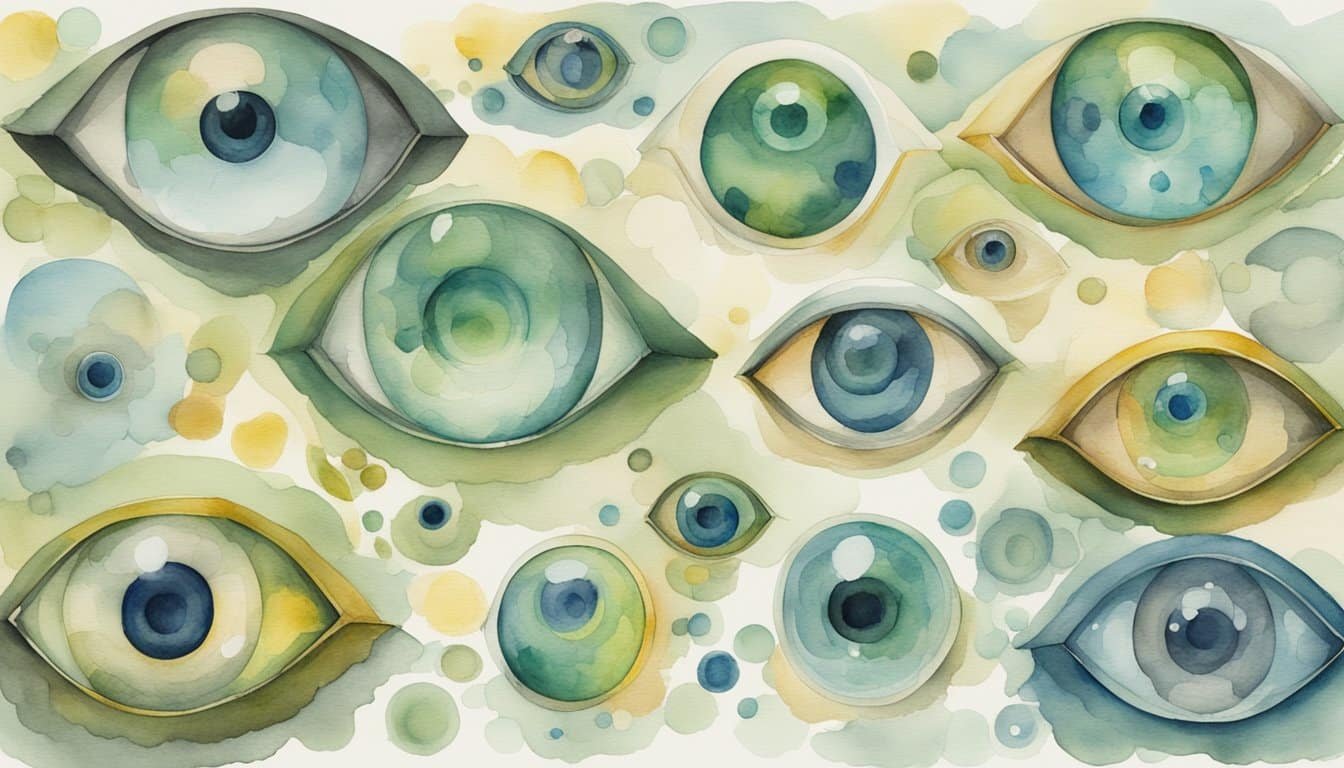Understanding Pupil Size and Function
The pupil is a central part of the eye that goes beyond just a black dot; it plays an integral role in how we perceive the world.
Anatomy of the Pupil
The pupil is essentially a hole located in the center of the iris, the colored part of the eye. It appears black because it’s a direct passageway into the inner eye where light is absorbed. Pupil size is regulated by the iris’s muscles: circular muscles (sphincter pupillae) and radial muscles (dilator pupillae). These muscle groups are in perpetual tug-of-war, adjusting the pupil’s size in response to light or other stimuli.
Role of Pupil in Vision
A primary function of the pupil is to control the amount of light entering the eye. In bright light conditions, the pupil constricts to reduce the light intake and protect the retina from excessive exposure. Conversely, in dim lighting, the pupil dilates to allow more light to reach the retina. Pupil size adjustments aid in focusing on objects at different distances—a response known as the pupillary light reflex. It’s connected to the optic nerve, which carries signals to the brain. Abnormalities in this process, like an afferent pupillary defect, may indicate issues with the optic nerve or retinal function.
Factors Affecting Pupil Size

Pupil size is influenced by an array of internal and external factors, from light exposure to medical conditions and even the medications people take. Understanding these influences can shed light on how the eyes respond and adapt to various stimuli and circumstances.
Light Reaction and Aperture Control
The pupil behaves much like the aperture of a camera, altering in size to regulate the amount of light reaching the retina. In bright conditions, the pupils constrict to reduce light intake, a response controlled by the parasympathetic nervous system. Conversely, in low light, the pupils dilate to allow more light to enter, a reaction governed by the sympathetic nervous system. Check out this study on various factors affecting pupil size for additional insights into the ways light influences pupils.
Medical Conditions and Pupil Size
Several medical conditions can affect pupil size. Anisocoria is a condition where the pupils are unequal sizes, which may signal underlying health issues. Additionally, Adie syndrome can cause a dilated pupil that reacts more slowly to light. Ongoing research such as that encapsulated by the Pupil Diameter Study is always expanding our understanding of these phenomena.
Impact of Substances and Medications
Substances and medications can cause either a constricted or dilated pupil depending on their action on the nervous system. Opiates, for instance, typically result in constricted pupils, while anticholinergics can lead to dilation. The Twin Eye Study offers insight into how different factors, including substance use, might influence pupil size after dilatation. It’s important to note how the likes of these substances interact with the body’s complex systems to alter the appearance and function of the pupils.
Abnormal Pupil Size and Conditions

When someone’s pupils are not the typical size or shape, it could be a sign of underlying health issues. Two common problems are when they’re of unequal size, known as anisocoria, or when they react unusually to light.
Common Pupillary Abnormalities
Anisocoria is where the pupils are of different sizes and can be a harmless condition known as physiologic anisocoria, or indicate more serious concerns such as a brain aneurysm or a nerve palsy. If the pupils are abnormally small, or experiencing miosis, this could be due to brain hemorrhage or use of certain eye drops. Conversely, mydriasis denotes unusually large pupils and can result from trauma, glaucoma medication, or the presence of a tumor. Horner’s syndrome is characterized by a combination of a drooping eyelid, decreased sweating on the affected side of the face, and a small pupil. Another condition, known as Argyll Robertson pupil, is sometimes a consequence of neurosyphilis and presents as pupils that do not constrict when exposed to light but do constrict when focusing on an object nearby, showing the so-called “light-near dissociation.”
Diagnostic Procedures and Healthcare Guidance
If a person experiences an abnormal pupil size or reaction to light, they should see a doctor. Diagnostic procedures often begin with a thorough eye exam and may include scrutinizing the eyes’ reactivity to light, the ability to open and close the eyelids (eyelid ptosis), and the accommodative response of the eye. These tests help assess the state of the oculomotor nerve and the autonomic nervous system, which are crucial in regulating pupils. For example, the swinging flashlight test is an easy way to spot a Marcus Gunn pupil, which may suggest serious conditions such as an aneurysm or a third nerve palsy. The medical provider could recommend additional imaging, like a CT scan or MRI, if a brain tumor, Hemorrhage, or stroke is suspected. It’s important for individuals to understand that while some pupils’ abnormalities are temporary and harmless, others may indicate life-threatening medical conditions and require immediate intervention.

